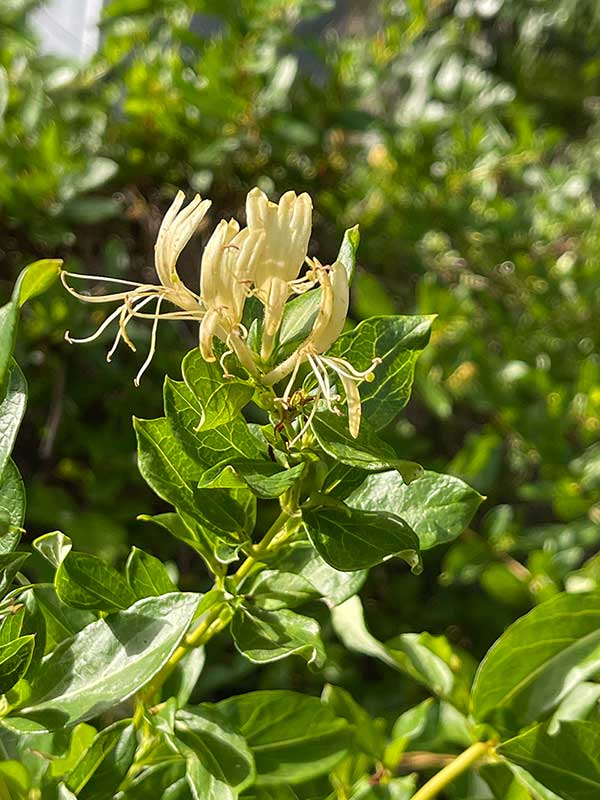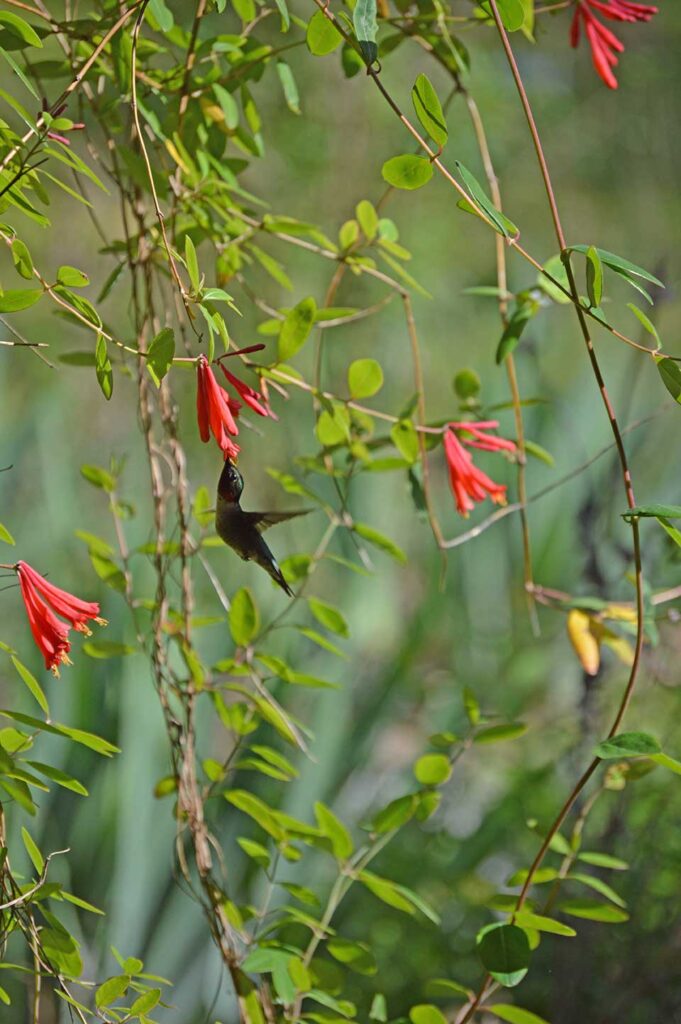
Have you ever plucked a honeysuckle flower, turned it around, and gently sucked the nectar from the tube-shaped back of the flower? If you grew up in the southeastern U.S., I bet you did.
That taste of super-sweet honey nectar always makes me think of summer nights spent chasing fireflies and summer days spent running wild and free.
Imagine my surprise when taking a class on native plants and shrubs in college that I learned that the yellow and white-flowered honeysuckle that could be seen growing everywhere each summer was not native to the Southeast.
The vine that reminded me so much of summer memories was called Japanese honeysuckle. Japanese honeysuckle, Lonicera japonica, was introduced to the United States from Japan in 1906 and can now be found in 36 states. In some states, it is considered invasive.
Native Honeysuckle – Coral Honeysuckle
With bright red, tubular flowers, you would think that coral honeysuckle (also known as trumpet honeysuckle) would really stand out, but I can’t think of a time when I have seen this native honeysuckle growing in the wild.
I discovered this vine when seeking out native plants that attract hummingbirds to add to my garden. Imagine my surprise when I found out it was native to the state I was living in. Actually, it’s native to most of the eastern and south-central U.S.
I had an arbor built in the front of my house and I planted both coral honeysuckle (Lonicera sempervirens) and crossvine (Bignonia capreolata). They were beautiful blooming together and the hummingbirds and bees were frequently buzzing around the arbor, feeding on the flowers.
Where to Plant Coral Honeysuckle
To get the most flowers from this native vine, plant it in full sun, in rich, moist, well-drained soil. It is hardy in USDA zones 4 to 9. It’s drought-tolerant and deer-resistant – always a bonus in my garden.
The leaves are semi-evergreen (just like crossvine), but you should trim them back in the winter so that you’ll have more flowers in spring. You will see the most flowers on coral honeysuckle in the spring, but it will continue to bloom sporadically throughout the summer and even into fall.

Wildlife Value of Coral Honeysuckle
I planted my vines to attract pollinators (bees and butterflies) and hummingbirds, but the seeds of this plant are also a source of food for birds including American robins, purple finches, goldfinches and others.
The vine is a host plant for the spring azure butterfly (Celastrina ladon) and the clearwing moth (Hemaris thysbe). Hummingbirds, bees, and butterflies feed on the nectar produced by the flowers.

